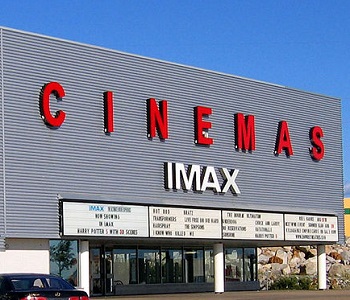The new VR experience is set to debut in Los Angeles later this year.
The theatre company, famed for its massive projection systems and IMAX cameras recently announced that it intends to launch several IMAX virtual reality entertainment locations around the world later this year, starting with its first in Los Angeles, reported the Wall Street Journal.
IMAX has partnered with Google and Starbreeze AB to bring its mainstream VR plans to life.
To launch its virtual reality entertainment in locations like malls and multiplexes across the United States and in other parts of the world like China, the company has formed new partnerships in the tech community and intends to use its connections with movie theatres and movie industry talent.
 IMAX has partnered with Google and announced late last week that it has plans to collaborate with Google on a camera that will capture 360 degree images designed to be experienced in virtual reality via VR headsets. It is anticipated that this camera will be ready for commercial use in approximately 18 months.
IMAX has partnered with Google and announced late last week that it has plans to collaborate with Google on a camera that will capture 360 degree images designed to be experienced in virtual reality via VR headsets. It is anticipated that this camera will be ready for commercial use in approximately 18 months.
In addition to Google, IMAX has partnered with Starbreeze AB, a Swedish technology developer, and will use its VR headsets to provide the immersive experience. To start, the IMAX VR experience will involve games, but the company hopes that it will be able to motivate filmmakers to the use the camera it is developing with Google to create other entertainment content, too.
The IMAX virtual reality experience is part of a much bigger strategy to expand the brand beyond movies.
According to Richard Gelfond, IMAX Chief Executive, the company’s move into the VR industry is part of its much larger strategy to evolve the company beyond the movie industry.
Gelfond said that “Virtual reality in the home is going to be a crowded space, but we thought the idea of doing VR in the multiplex of the future was a place where we can provide a superior experience and a social experience, which are the same reasons people go to movies.”
That being said, while IMAX virtual reality could be an actual reality soon don’t expect this VR experience to come cheap. While none of the official details have been hammered out, Gelfond said that he is particularly interested in developing VR content that is linked to film franchises because this would naturally appeal to move goers. The cost: he imagines 10 minute VR experiences costing between $7 and $10.

 The Google vice president of product management, Clay Bavor, has been in control of the company’s apps; such as Drive, Gmail and Docs. Since the launch of Cardboard in 2014, he has also been the head of that division. Moving forward, Bavor is stepping away from apps in order to place all his attention on
The Google vice president of product management, Clay Bavor, has been in control of the company’s apps; such as Drive, Gmail and Docs. Since the launch of Cardboard in 2014, he has also been the head of that division. Moving forward, Bavor is stepping away from apps in order to place all his attention on 